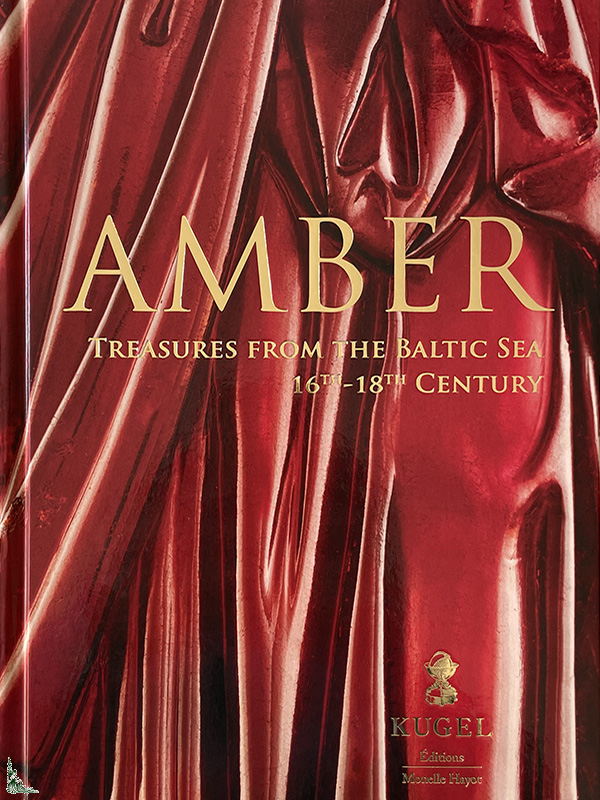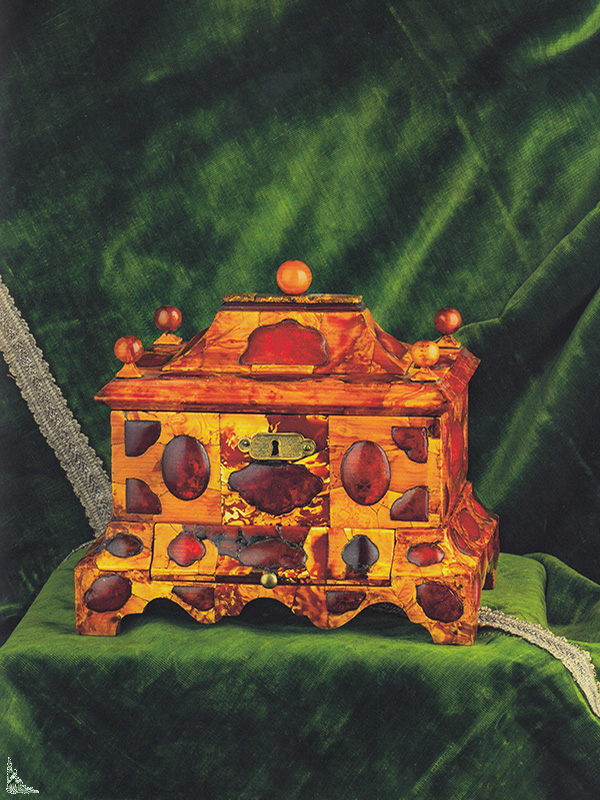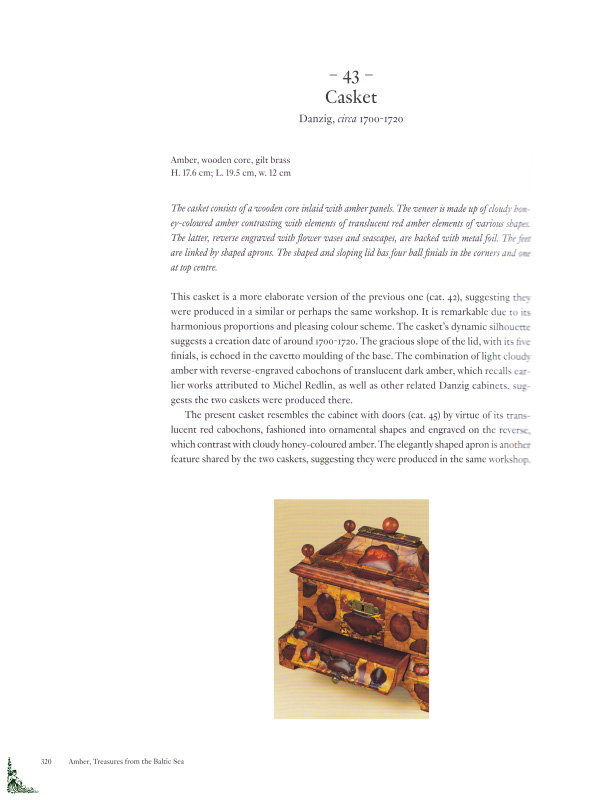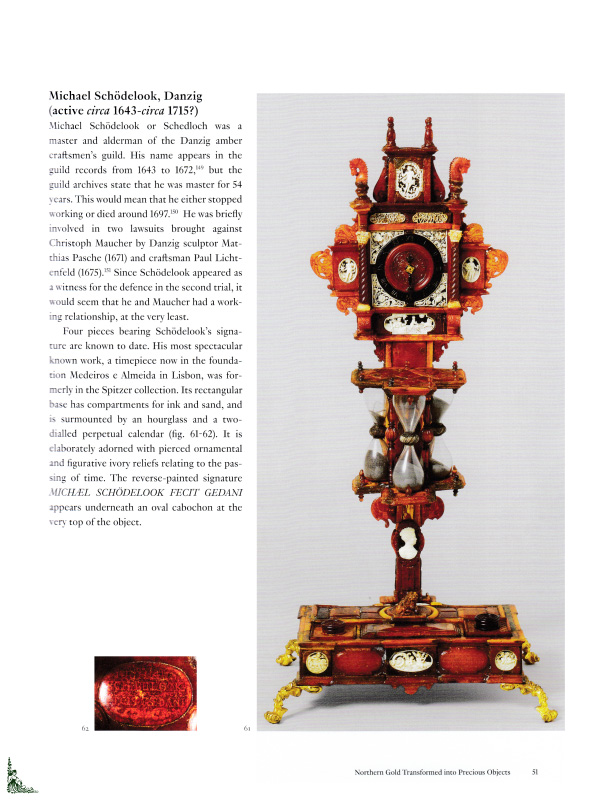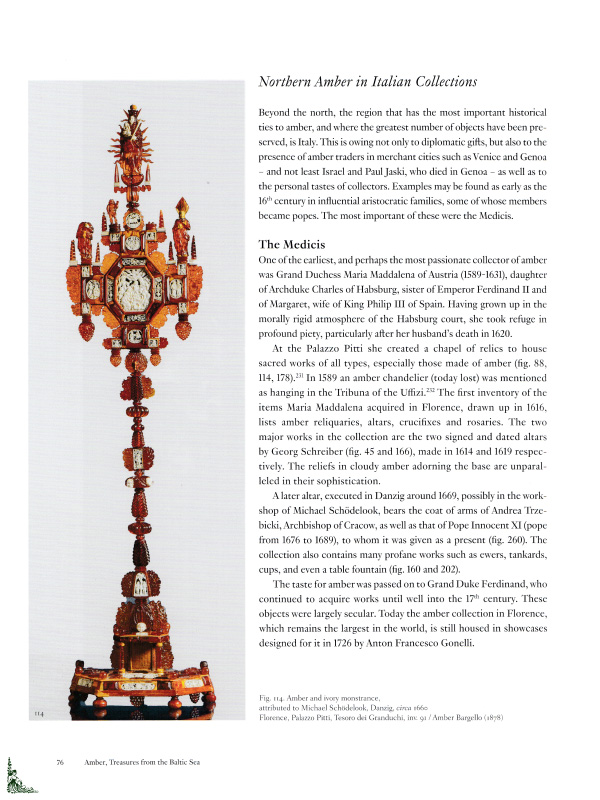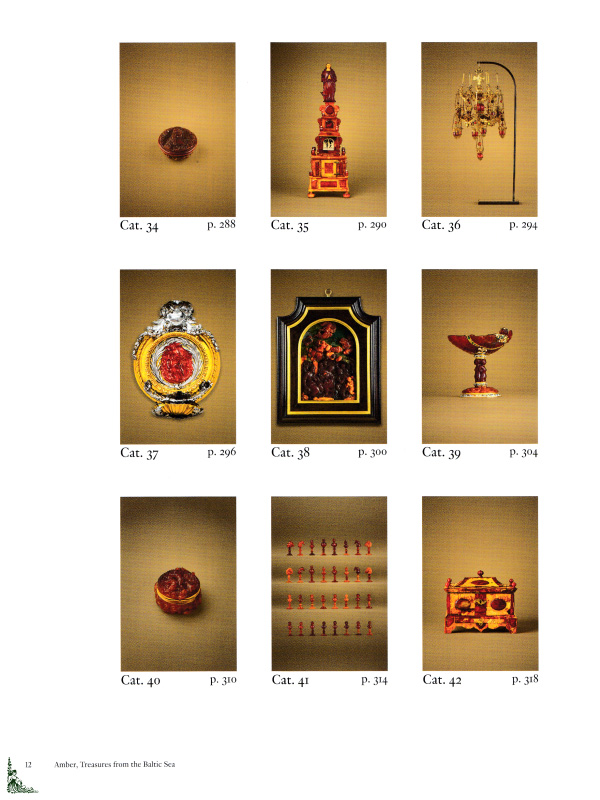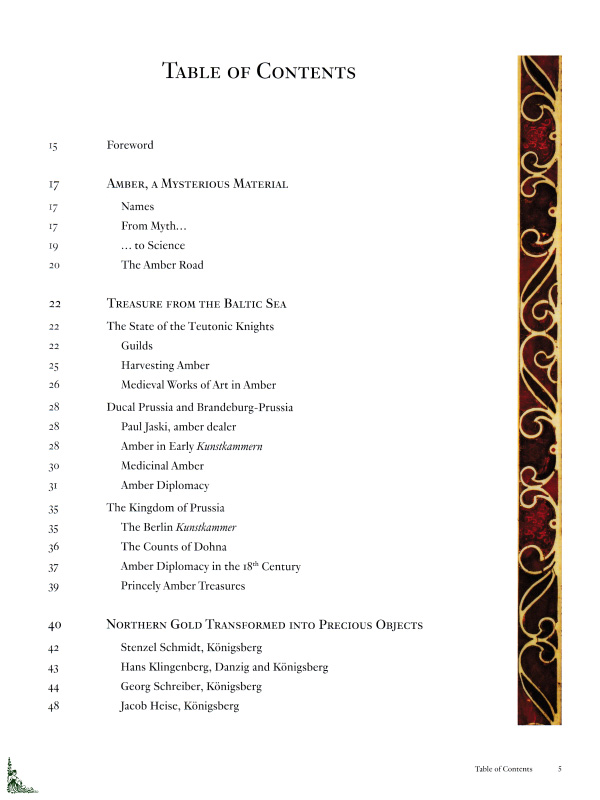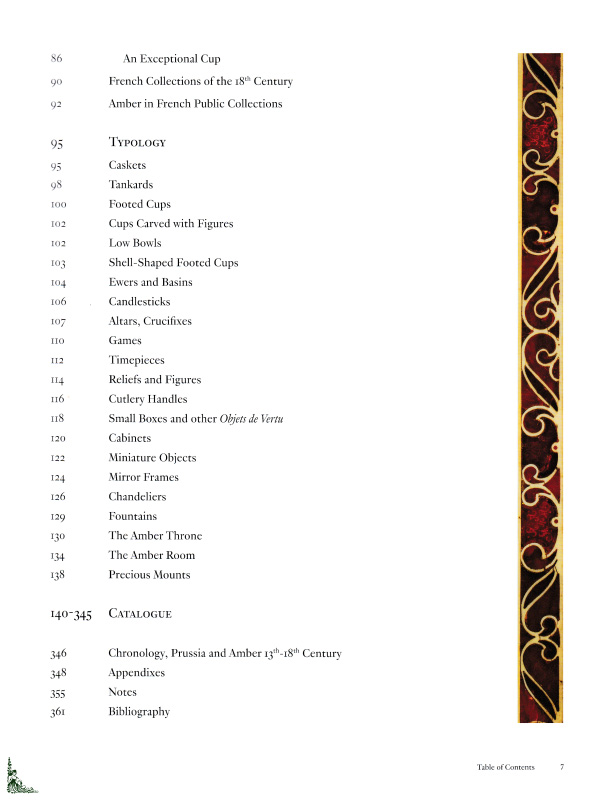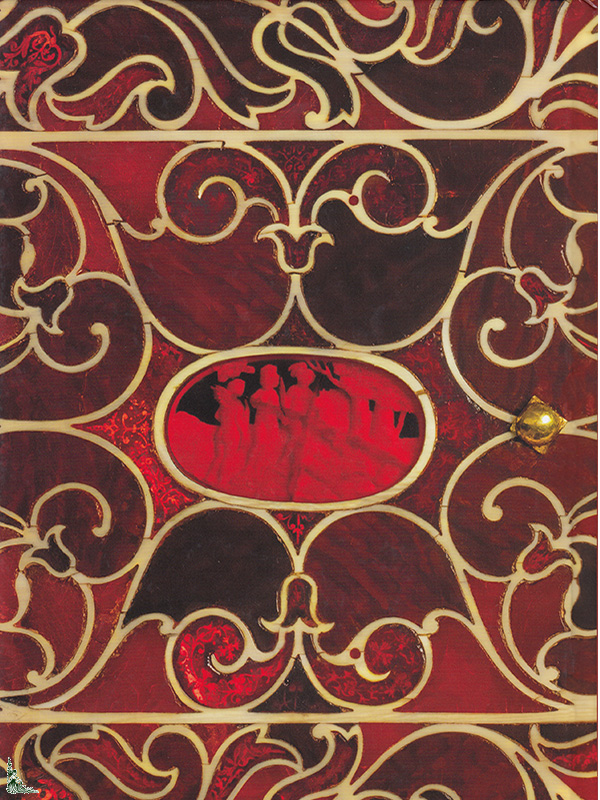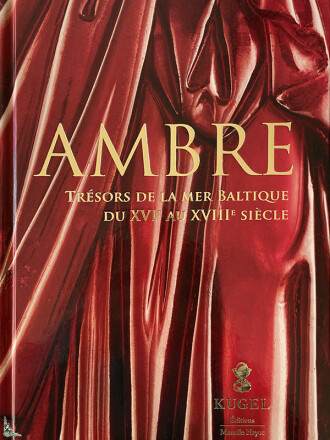Amber, Treasures from the Baltic sea, 16th - 18th century, English edition
Informações sobre o livro
| Autores : | Alexis Kugel & Rahul Kulka |
| Editor : | Monelle-Hayot (2023) |
| Encadernação : | Hardcover (368 full color pages) 8 inches x 12 inches |
| Língua : | English |
| ISBN : | 979-10-96561-44-5 |
| EAN : | 9791096561445 |
Descrição
Amber, Treasures from the Baltic sea, 16th - 18th century, English edition, by A. Kugel and R. Kulka, Ed. Monelle-Hayot, 8 inches x 12 inches ( 21 cm x 30.5 cm ), hardcover book with 368 full color pages
This hardcover book of 368 full color pages is entirely dedicated to Amber.
Amber is a unique material that has fascinated people since Antiquity. Light, aromatic, delicate, with electrical properties, it is available in a range of colors ranging from translucent dark red to opaque white.
From Roman times until the 18th century, scholars were lost in conjectures about its origin, some defining it as whale sperm, others as solidified lynx urine. Its mystery appears to have medicinal virtues. The inclusions of insects or small animals that are sometimes found trapped there make amber a symbol of immortality.
Pliny the Elder guesses its nature by seeing in it the result of a vegetable resin, but it was not until 1757 that the Russian scholar Mikhail Lomonosov determined its real origin. It is a fossilized resin coming, for the objects in this catalog, from a prehistoric forest dating back approximately 30 to 40 million years, located under the Baltic Sea, between the cities of Danzig (today Gdansk in Poland) and Königsberg (today Kaliningrad in Russia), then in East Prussia.
The presence of numerous jewelry and figurines in Baltic amber in the Greek and Roman world, in the tomb of Tutankhamun, and as far as China, offers fascinating insight into the exchanges trading sites of the time, along the "amber route" from the Baltic to the Adriatic. In the 16th century, the grand master Albert of Brandenburg-Ansbach converted to Protestantism and transformed the order of the Teutonic Knights into the Duchy of Prussia. Its doctors published the first books on the extraction of amber and its medicinal properties. This is the beginning of a tremendous expansion in the trade and production of amber art objects. They became the diplomatic gifts of Prussia par excellence and were sought after to adorn the Kunstkammern of the sovereigns and princes of Europe.
The Amber: Treasures of the Baltic Sea 16th-18th centuries exhibition is the first event dedicated to this subject in France. Combining sculptures, boxes, cups and games, the immense variety of pieces presented illustrates the fascination with amber from the 16th to the 18th century and the talent of artists to highlight all the nuances of this extraordinary material. This book brings together these exceptional objects and accompanies them with a scientific study on amber, its origins, its commercial and artistic use.
Contents:
Foreword
- Amber, a mysterious material
- Treasure from the Baltic sea
- The state of the Teutonic Knights
- Ducal Prussia and Brandeburg-Prussia
- The Kingdom of Prussia
- Northern gold transformed into precious objects
- Amber and Italy
- Amber and France
- TYPOLOGY
- CATALOGUE
- Chronology, Prussia and amber 13th - 18th century
- Appendices
- Bibliography
The Engkish texts are written by Alexis Kugel and Rahul Kulka.
 Description française
Description française
Ambre, Trésors de la mer Baltique, du XVIe au XVIIIe siècle, Edition Anglaise
Détails du livre
| Auteur : | Alexis Kugel & Rahul Kulka |
| Éditeur : | Monelle-Hayot (2023) |
| Reliure : | Relié (368 pages couleurs) 21 cm x 30.5 cm ( 8 inches x 12 inches ) |
| Langue(s) : | Anglais |
| ISBN : | 979-10-96561-44-5 |
| EAN : | 9791096561445 |
Description
Ambre, Trésors de la mer Baltique, du XVIe au XVIIIe siècle, Edition Anglaise, de A. Kugel et R. Kulka , Ed. Monelle-Hayot, 21 cm x 30.5 cm, relié avec 368 pages couleurs
Cet ouvrage relié de 368 pages couleurs est entièrement dédié à l'Ambre.
L'ambre est une matière unique qui fascine depuis l'Antiquité. Légère, aromatique, délicate, aux propriétés électriques, elle se décline dans une gamme de couleurs allant du rouge sombre translucide au blanc opaque.
De l'époque romaine jusqu'au XVIIIe siècle, les savants se perdirent en conjectures sur son origine, certains la définissant comme du sperme de baleine, d'autres comme de l'urine de lynx solidifiée. Son mystère la parait de vertus médicinales. Les inclusions d'insectes ou de petits animaux qu'on y trouve parfois prisonniers font de l'ambre un symbole d'immortalité.
Pline l'Ancien devine sa nature en y voyant le résultat d'une résine végétale, mais ce n'est qu'en 1757 que le savant russe Mikhaïl Lomonossov détermina son origine réelle. Il s'agit d'une résine fossilisée provenant, pour les objets de ce catalogue, d'une forêt préhistorique datant d'environ 30 à 40 millions d'années, située sous la mer Baltique, entre les villes de Dantzig (aujourd'hui Gdansk en Pologne) et Königsberg (aujourd'hui Kaliningrad en Russie), alors en Prusse-Orientale.
La présence de nombreux bijoux et figurines en ambre baltique dans le monde grec et romain, dans la tombe de Toutankhamon, et jusqu'en Chine, offre un éclairage fascinant sur les échanges commerciaux de l'époque, le long de la « route de l'ambre » de la Baltique à l'Adriatique. Au XVIe siècle, le grand maître Albert de Brandebourg-Ansbach se convertit au protestantisme et transforme l'ordre des Chevaliers teutoniques en duché de Prusse. Ses docteurs publient les premiers livres sur l'extraction de l'ambre et ses vertus médicinales. C'est le début d'une formidable expansion du commerce et de la production des objets d'art en ambre. Ils deviennent les cadeaux diplomatiques de la Prusse par excellence et sont recherchés pour orner les Kunstkammern des souverains et des princes d'Europe.
L'exposition Ambre : trésors de la mer Baltique XVIe-XVIIIe siècles est la première manifestation dédiée à cette matière en France. Mêlant sculptures, coffrets, coupes et jeux, l'immense variété des pièces présentées illustre la fascination pour l'ambre du XVIe au XVIIIe siècle et le talent des artistes pour mettre en valeur toutes les nuances de cette matière extraordinaire. Cet ouvrage réunit ces objets d'exception et les accompagne d'une étude scientifique sur l'ambre, ses origines, son utilisation commerciale et artistique.
Principaux chapitres de l'ouvrage :
Avant-propos
- L'ambre, un matériau mystérieux
- Un trésor de la mer Baltique
- L'État des chevaliers Teutoniques
- Le duché de Prusse et le Brandebourg-Prusse
- Le royaume de Prusse
- L'or du Nord transformé en objets précieux
- L'ambre et l'Italie
- L'ambre et la France
- TYPOLOGIE
- CATALOGUE
- Chronologie, la Prusse et l'ambre XIIIe - XVIII siècles
- Annexes
- Bibliographie
Les textes en Anglais sont de Alexis Kugel et Rahul Kulka.


